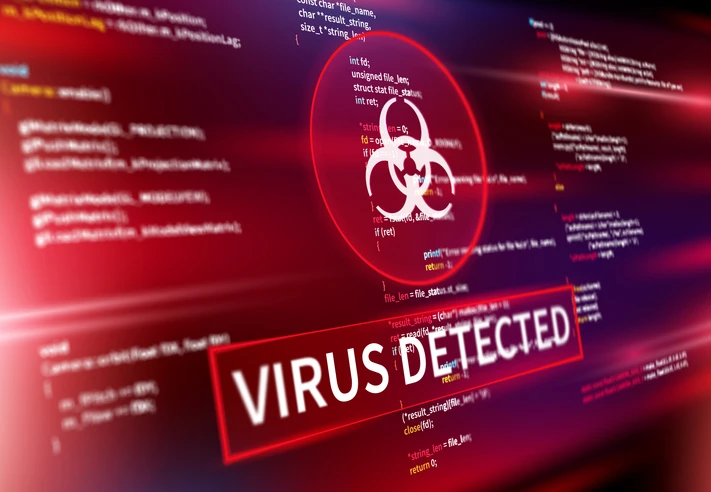How Detection Protects Against Cyber Threats
In the ever-evolving cybersecurity landscape, detection is a critical component in defending against sophisticated cyber threats. As attackers continue to develop new tactics, techniques, and procedures (TTPs),organizations must rely on advanced detection mechanisms to identify and mitigate risks in real time. This article explores how detection works, the technologies behind it, and its role in protecting organizations from cyber threats.
- The Role of Detection in CybersecurityDetection is the process of identifying malicious activity, unauthorized access, or any anomaly that could indicate a potential cyber threat. It serves as the foundation for preventing breaches by alerting security teams to the presence of suspicious behavior before an attack can escalate. Unlike traditional reactive approaches that rely solely on responding to detected incidents, modern detection solutions aim to identify threats proactively, minimizing the time attackers have to infiltrate systems.
- Real-Time Threat DetectionOne of the most significant advantages of modern detection systems is their ability to operate in real time. Tools such as Intrusion Detection Systems (IDS) and Endpoint Detection and Response (EDR) continuously monitor network traffic, endpoints, and user activity. By analyzing patterns and behaviors, these systems can detect anomalies that traditional signature-based solutions might miss. For example, an EDR solution can identify when a legitimate application begins executing unusual commands, signaling a potential compromise.
- Behavioral Analysis and Machine LearningAdvanced detection mechanisms leverage behavioral analysis and machine learning to identify threats. Behavioral analysis focuses on understanding the normal activity patterns of users, devices, and applications. When deviations occur, such as unusual login locations or large data transfers, these systems flag the activity for further investigation. Machine learning enhances this process by analyzing vast amounts of data to identify subtle patterns that might indicate a threat, such as coordinated attacks across multiple endpoints.
- Types of Cyber Threats DetectedMalware and Ransomware: Detection systems identify malicious files and executables, often using sandboxing techniques to analyze behavior before execution.
Phishing Attempts: Email and network monitoring tools detect phishing attempts by analyzing email headers, URLs, and sender behaviors.
Insider Threats: Behavioral detection systems monitor for unusual activity from trusted users, such as accessing sensitive files outside business hours.
Advanced Persistent Threats (APTs): These are long-term, targeted attacks that evade traditional defenses. Detection tools analyze network traffic and endpoint activity for subtle indicators of compromise.
- Key Technologies Behind DetectionIntrusion Detection Systems (IDS): IDS monitor network traffic for suspicious activities and known attack signatures.
Security Information and Event Management (SIEM): SIEM tools aggregate and analyze logs from various sources, providing a holistic view of the security environment.
Artificial Intelligence (AI): AI-driven systems improve detection accuracy by identifying previously unseen patterns and predicting potential threats.
Endpoint Detection and Response (EDR): EDR provides real-time monitoring and analysis of endpoint activities to detect and respond to threats.
- How Detection Enhances Incident ResponseDetection plays a vital role in incident response by providing actionable insights. When a threat is detected, modern tools can automate containment measures, such as isolating compromised endpoints or blocking malicious IP addresses. This reduces response times and prevents the attack from spreading. Detection systems also provide detailed logs and reports, helping analysts understand the scope and impact of an incident.
- Challenges in DetectionDespite its effectiveness, detection is not without challenges. Attackers use techniques such as encryption and polymorphic malware to evade detection. Additionally, false positives can overwhelm security teams, leading to alert fatigue. To overcome these challenges, organizations must invest in advanced detection technologies that minimize false positives and continuously adapt to emerging threats.
Why Detection Alone Cannot Protect Against New Malware
While detection is a critical component of any cybersecurity strategy, it is not sufficient on its own to protect against the ever-evolving landscape of malware threats. As cybercriminals develop more sophisticated techniques to evade detection, organizations must adopt a comprehensive approach that goes beyond traditional detection mechanisms. Below, we explore the limitations of detection-only strategies and why a layered defense approach is necessary to combat new and advanced malware.
- Evasive Malware Techniques Modern malware is designed to bypass detection systems using advanced techniques such as:
Polymorphism: Malware constantly changes its code to avoid signature-based detection. Traditional antivirus solutions often fail to recognize these modified versions, leaving systems vulnerable.
Fileless Attacks: These attacks operate in memory rather than creating files on the system, making them invisible to file-based detection tools.
Encryption: Malware often uses encryption to disguise its communications and payload, making it difficult for detection systems to identify malicious activity.
These techniques highlight the need for additional layers of security beyond detection to prevent malware from executing its payload.
- Zero-Day Threats Zero-day threats exploit vulnerabilities that are unknown to the software vendor and, therefore, do not have existing signatures or patches. Detection systems that rely on known patterns or signatures are blind to these threats, allowing attackers to infiltrate networks undetected.
For example, a zero-day exploit targeting an unpatched software vulnerability can bypass detection systems entirely, as no indicators of compromise (IoCs) have been established. This limitation underscores the importance of proactive defenses, such as containment and patch management, to mitigate risks.
- False Positives and Alert Fatigue Detection systems are prone to generating false positives—alerts for benign activities flagged as threats. While it’s better to err on the side of caution, excessive false positives can overwhelm security teams, leading to alert fatigue. When analysts spend time investigating non-threatening activities, genuine threats may go unnoticed, allowing malware to spread within the network.
Advanced systems using artificial intelligence (AI) and behavioral analysis can reduce false positives, but they still require integration with other security measures to provide comprehensive protection.
- Reactive Nature of Detection Detection systems are inherently reactive, identifying threats only after they exhibit malicious behavior or match a known pattern. By the time a threat is detected, it may have already initiated harmful activities, such as data exfiltration or lateral movement across the network.
A proactive approach is essential to complement detection capabilities. Techniques such as endpoint isolation, application containment, and behavioral blocking can stop malware in its tracks before it causes damage.
- The Need for a Zero Trust Architecture A detection-only strategy assumes that threats can be identified and stopped based on their behavior or signatures. However, this assumption leaves room for errors. A Zero Trust architecture eliminates such assumptions by continuously verifying the safety of every application, file, or process before granting it access.
This approach ensures that even if malware bypasses detection systems, it cannot execute or spread without meeting strict verification protocols. Zero Trust significantly reduces the risk of undetected malware compromising the network.
Why a Layered Approach is Necessary
To effectively combat new malware, organizations must adopt a layered defense strategy that includes:
Prevention: Tools like sandboxing and containment can stop malware from executing, even if it evades detection.
Protection: Endpoint security solutions with advanced threat protection capabilities ensure a robust second line of defense.
Response: Automated incident response tools can isolate affected endpoints and remediate threats quickly.
Awareness: Ongoing threat intelligence and vulnerability management help prepare for emerging threats.






